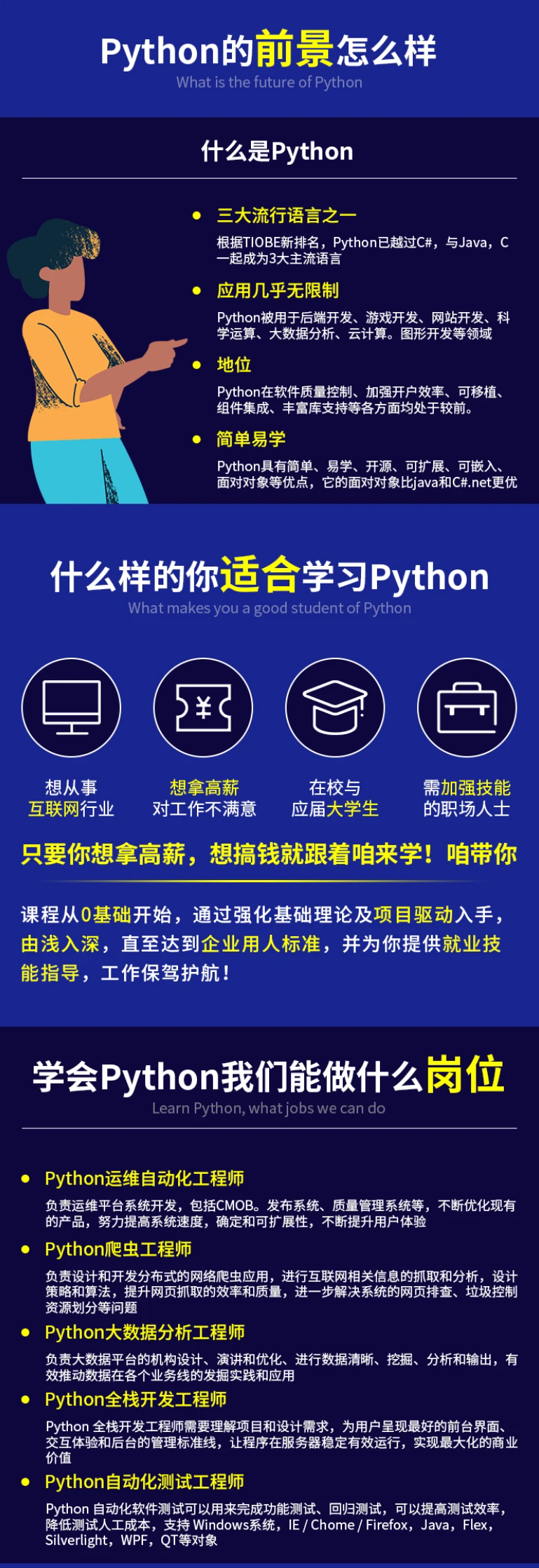solver_genome.fitness = math.log(800000) # ~=13.59
个体适应度评价函数
此函数是种群适应性评估的重要组成部分,可以从前面讨论的eval_genomes函数中调用该功能,以评估种群中每个基因组的迷宫解决性能。
通过迷宫导航模拟对单个基因组作为迷宫导航器的评估如下:
def eval_individual(genome_id, genome, genomes, n_items_map, config):
创建NoveltyItem对象,以保存有关与特定基因组相关的新颖性评分的信息,
并将其保存在n_items_map字典的全基因组ID下
n_item = archive.NoveltyItem(generation=trial_sim.population.generation,
genomeId=genome_id)
n_items_map[genome_id] = n_item
创建原始迷宫环境的副本,以避免在仿真过程中产生副作用,然后从提供的基因组创建ANN
maze_env = copy.deepcopy(trial_sim.orig_maze_environment)
control_net = neat.nn.FeedForwardNetwork.create(genome, config)
使用迷宫环境和ANN的副本,针对给定数量的模拟步骤执行迷宫求解模拟
goal_fitness = maze.maze_simulation_evaluate(
env=maze_env,
net=control_net,
time_steps=SOLVER_TIME_STEPS,
n_item=n_item,
mcns=MCNS)
if goal_fitness == -1:
The individual doesn’t meet the minimal fitness criterion
print(“Individ with ID: %d marked for extiction, MCNS: %f”
% (genome_id, MCNS))
return False
返回的基于目标的适应度评分以及其他基因组参数存储在AgentRecord中,然后将其添加到记录存储中
record = agent.AgentRecord(
generation=trial_sim.population.generation,
agent_id=genome_id)
record.fitness = goal_fitness
record.x = maze_env.agent.location.x
record.y = maze_env.agent.location.y
record.hit_exit = maze_env.exit_found
record.species_id = trial_sim.population.species.get_species_id(genome_id)
record.species_age = record.generation - \
trial_sim.population.species.get_species(genome_id).created
add record to the store
trial_sim.record_store.add_record(record)
如果给定的基因组不是最终结果,估计其新奇分数,
用当前基因组的NoveltyItem更新NoveltyArchive中高适应度值的基因组列表:
if not maze_env.exit_found:
evaluate genome novelty and add it to the archive if appropriate
record.novelty = trial_sim.archive.evaluate_individual_novelty(
genome=genome, genomes=genomes,n_items_map=n_items_map)
update fittest organisms list
trial_sim.archive.update_fittest_with_genome(genome=genome,
n_items_map=n_items_map)
return maze_env.exit_found
实验中,基因组的适应度评分定义为两个单独的值,每个值具有不同的用途。面向目标的适应性评分有助于测试是否已找到解,并收集统计信息。基于新颖性的适应度评分指导神经进化过程。
迷宫环境与迷宫求解器智能体介绍
该部分详细介绍参考链接。
超参数选择
实验中使用的目标函数基于没有明确上限值的新颖性度量。因此,不能精确地估计适应度阈值,为了表明找到了胜出的解决方案,使用一个指示值。
选择800000作为指示性新颖性得分。但是,为了在绘制实验结果时保持适应度得分的直观呈现,使用自然对数缩小了求解器的新颖性得分。因此,配置文件中使用的适应性阈值变为13.5,这比最大可能适应度分数(13.59)小一点,以避免出现舍入浮点数的问题:
[NEAT]
fitness_criterion = max
fitness_threshold = 13.5
pop_size = 500
reset_on_extinction = False
物种在进化停滞时的的生存时间更长:
[DefaultStagnation]
max_stagnation = 100
实验运行函数
config = neat.Config(
neat.DefaultGenome,neat.DefaultReproduction,
neat.DefaultSpeciesSet,neat.DefaultStagnation,
config_file)
p = neat.Population(config)
- 为了在每次评估之后保留中间结果,使用MazeSimulationTrial对象初始化trial_sim全局变量。
global trial_sim
trial_sim = MazeSimulationTrial(maze_env=maze_env,population=p,archive=novelty_archive)
p.add_reporter(neat.StdOutReporter(True))
stats = neat.StatisticsReporter()
p.add_reporter(stats)
start_time = time.time()
best_genome = p.run(eval_genomes,n=n_generations)
elapsed_time = time.time() - start_time
Display the best genome among generations.
print(‘\nBest genome: \n%s’ % (best_genome))
solution_found = (best_genome.fitness >= config.fitness_threshold)
if solution_found:
print(“SUCCESS: The stable maze solver controller was found!!!”)
else:
print(“FAILURE: Failed to find the stable maze solver controller!!!”)
node_names = {
-1:‘RF_R’,-2:‘RF_RF’,-3:‘RF_F’,-4:‘RF_FL’,
-5:‘RF_L’,-6:‘RF_B’,-7:‘RAD_F’,-8:‘RAD_L’,
-9:‘RAD_B’,-10:‘RAD_R’,0:‘ANG_VEL’,1:‘VEL’
}
visualize.draw_net(
config,best_genome,view=show_results,
node_names=node_names,directory=trial_out_dir,
fmt=‘svg’)
if args is None:
visualize.draw_maze_records(
maze_env,trial_sim.record_store.records,
view=show_results)
else:
visualize.draw_maze_records(
maze_env,trial_sim.record_store.records,
view=show_results,width=args.width,
height=args.height,
filename=os.path.join(trial_out_dir,‘maze_records.svg’))
visualize.plot_stats(
stats,ylog=False,
filename=os.path.join(trial_out_dir,‘avg_fitness.svg’))
visualize.plot_species(
stats,view=show_results,
filename=os.path.join(trial_out_dir,‘speciation.svg’))
store NoveltyItems archive data
trial_sim.archive.write_fittest_to_file(
path=os.path.join(trial_out_dir,‘ns_items_fittest.txt’))
trial_sim.archive.write_to_file(
path=os.path.join(trial_out_dir,‘ns_items_all.txt’)
)
- 最后,执行其他可视化例程,以可视化迷宫求解器智能体通过迷宫的路径。
maze_env = copy.deepcopy(trial_sim.orig_maze_environment)
control_net = neat.nn.FeedForwardNetwork.create(best_genome,config)
path_points = []
evaluate_fitness = maze.maze_simulation_evaluate(
env=maze_env,net=control_net,
time_steps=SOLVER_TIME_STEPS,
path_points=path_points)
print(“Evaluated fitness of best agent: %f” % evaluate_fitness)
visualize.draw_agent_path(
trial_sim.orig_maze_environment,
path_points,best_genome,
view=show_results,width=args.width,
height=args.height,
filename=os.path.join(trial_out_dir,‘best_solver_path.svg’))
运行实验
在终端中执行以下命令:
$ python3 maze_experiment.py -g 500 -t 10 -m medium --width 300 --height 150
显示获胜者基因组的配置和有关试验的一般统计数据:
Best genome:
Key: 36170
Fitness: 13.592367006650065
Nodes:
0 DefaultNodeGene(key=0, bias=0.9583749969785536, response=1.0, activation=sigmoid, aggregation=sum)
1 DefaultNodeGene(key=1, bias=-1.3352111211865185, response=1.0, activation=sigmoid, aggregation=sum)
Connections:
DefaultConnectionGene(key=(-10, 0), weight=2.012697148953962, enabled=True)
DefaultConnectionGene(key=(-10, 1), weight=2.3586743900645715, enabled=True)
DefaultConnectionGene(key=(-9, 0), weight=0.5133819837545476, enabled=False)
DefaultConnectionGene(key=(-9, 1), weight=-1.3453064468779043, enabled=True)
DefaultConnectionGene(key=(-8, 0), weight=-1.3151248904230235, enabled=True)
DefaultConnectionGene(key=(-6, 1), weight=-1.50551995321142, enabled=True)
DefaultConnectionGene(key=(-5, 0), weight=-3.020445866909174, enabled=False)
DefaultConnectionGene(key=(-5, 1), weight=-2.090540743662507, enabled=True)
DefaultConnectionGene(key=(-4, 0), weight=-1.8754146567384993, enabled=True)
DefaultConnectionGene(key=(-4, 1), weight=2.0773106904549614, enabled=True)
DefaultConnectionGene(key=(-3, 0), weight=2.6406887829938044, enabled=True)
DefaultConnectionGene(key=(-3, 1), weight=0.4049529471735065, enabled=True)
DefaultConnectionGene(key=(-2, 1), weight=0.5571713919237005, enabled=True)
DefaultConnectionGene(key=(-1, 0), weight=1.5212036155782374, enabled=True)
DefaultConnectionGene(key=(-1, 1), weight=0.7204766260373855, enabled=True)
DefaultConnectionGene(key=(0, 0), weight=1.1105019563826226, enabled=True)
SUCCESS: The stable maze solver controller was found!!!
控制器ANN的最终配置如下所示:
 进化过程适应度得分曲线图:
进化过程适应度得分曲线图:
进化过程中物种图:

智能体记录可视化
智能体记录的可视化:
$ python3 visualize.py -m medium -r out/maze_ns/medium/0/data.pickle --width 300 --height 150

查看成功的智能体的路径,该智能体能够找到迷宫出口:

- geometry.py、medium_maze.txt、utils.py
代码链接。
- agent.py
import pickle
class Agent:
“”"
This is maze navigating agent.
“”"
def init(
self,location,heading=0,speed=0,angular_vel=0,radius=8.0,
range_finder_range=100.0):
“”"
Creates new Agent with spcified parameters.
Arguments:
location: The agent initial position within maze.
heading: The heading direction in degrees.
speed: The linear velocity of the agent.
angular_vel: The angular velocity of the agent.
radius: The agent’s body radius.
range_finder_range: The maximal detection range for radar sensor.
“”"
self.heading = heading
self.speed = speed
self.angular_vel = angular_vel
self.radius = radius
self.range_finder_range = range_finder_range
self.location = location
defining the range finder sensors
self.range_finder_angles = [-90.0, -45.0, 0.0, 45.0, 90.0, -180.0]
defining the range radar sensors
self.radar_angles = [(315.0, 405.0), (45.0, 135.0), (135.0, 225.0), (225.0, 315.0)]
the list to hold range finders activations
self.range_finders = [None] * len(self.range_finder_angles)
the list to hold pie-slice radar activations
self.radar = [None] * len(self.radar_angles)
class AgentRecord:
“”"
The class to hold results of maze navigation simulation for specific
solver agent. It provides all statistics about the agent at the end
of navigation run.
“”"
def init(self,generation,agent_id):
“”"
Creates new record for specific agent at the specific generation
of the evolutionary process.
“”"
self.generation = generation
self.agent_id = agent_id
initialize agent’s properties
self.x = -1
self.y = -1
self.fitness = -1
self.novelty = -1
The flag to indicate whether this agent was able to find maze exit
self.hit_exit = False
The ID of species this agent belong to
self.species_id = -1
The age of agent’s species at the time of recording
self.species_age = -1
class AgentRecordStore:
“”"
The class to control agents record store.
“”"
def init(self):
“”"
Creates new instance.
“”"
self.records = []
def add_record(self,record):
“”"
The function to add specified record to this store.
Arguments:
record: The record to be added.
“”"
self.records.append(record)
def load(self, file):
“”"
The function to load records list from the specied file into this class.
Arguments:
file: The path to the file to read agents records from.
“”"
with open(file, ‘rb’) as dump_file:
self.records = pickle.load(dump_file)
def dump(self, file):
“”"
The function to dump records list to the specified file from this class.
Arguments:
file: The path to the file to hold data dump.
“”"
with open(file, ‘wb’) as dump_file:
pickle.dump(self.records, dump_file)
- maze_config.ini
[NEAT]
fitness_criterion = max
fitness_threshold = 13.5
pop_size = 500
reset_on_extinction = True
[DefaultGenome]
node activataion options
activation_default = sigmoid
activation_mutate_rate = 0.0
activation_options = sigmoid
node aggregation options
aggregation_default = sum
aggregation_mutate_rate = 0.0
aggregation_options = sum
node bias options
bias_init_mean = 0.0
bias_init_stdev = 1.0
bias_max_value = 30.0
bias_min_value = -30.0
bias_mutate_power = 0.5
bias_mutate_rate = 0.7
bias_replace_rate = 0.1
genome compatibility options
compatibility_disjoint_coefficient = 1.1
compatibility_weight_coefficient = 0.5
connection add/reomve rates
conn_add_prob = 0.5
conn_delete_prob = 0.1
connection enable options
enabled_default = True
enabled_mutate_rate = 0.01
feed_forward = False
initial_connection = partial_direct 0.5
node add/reomve rates
node_add_prob = 0.1
node_delete_prob = 0.1
network parameters
num_hidden = 1
num_inputs = 10
num_outputs = 2
node responde options
response_init_mean = 1.0
response_init_stdev = 0.0
response_max_value = 30.0
response_min_value = -30.0
response_mutate_power = 0.0
response_mutate_rate = 0.0
response_replace_rate = 0.0
connection weight options
weight_init_mean = 0.0
weight_init_stdev = 1.0
weight_max_value = 30.0
weight_min_value = -30.0
weight_mutate_power = 0.5
weight_mutate_rate = 0.8
weight_replace_rate = 0.1
[DefaultSpeciesSet]
compatibility_threshold = 3.0
[DefaultStagnation]
species_fitness_func = max
max_stagnation = 100
species_elitism = 1
[DefaultReproduction]
elitism = 2
survival_threshold = 0.1
min_species_size = 2
- maze_environment.py
import math
import agent
import geometry
from novelty_archive import NoveltyItem
The maximal allowed speed for the maze solver agent
MAX_AGENT_SPEED = 3.0
def maze_novelty_metric(first_item, second_item):
“”"
The function to calculate the novelty metric score as a distance
between two data vectors in provided NoveltyItems
Arguments:
first_item: The first NoveltyItem
second_item: The second NoveltyItem
Returns:
The novelty metric as a distance between two data vectors
in provided noveltyItems
“”"
if not (hasattr(first_item, ‘data’) or hasattr(second_item, ‘data’)):
return NotImplemented
if len(first_item.data) != len(second_item.data):
can not be compared
return 0.0
diff_accum = 0.0
size = len(first_item.data)
for i in range(size):
diff = abs(first_item.data[i] - second_item.data[i])
diff_accum += diff
return diff_accum / float(size)
def maze_novelty_metric_euclidean(first_item, second_item):
“”"
The function to calculate the novelty metric score as a distance
between two data vectors in provided NoveltyItems.
Arguments:
first_item: The first NoveltyItem
second_item: The second NoveltyItem
Returns:
The novelty metric as a distance between two data vectors
in provided noveltyItems
“”"
if not (hasattr(first_item, ‘data’) or hasattr(second_item, ‘data’)):
return NotImplemented
if len(first_item.data) != len(second_item.data):
can’t be compared
return 0.0
diff_accum = 0.0
size = len(first_item.data)
for i in range(size):
diff = (first_item.data[i] - second_item.data[i])
diff_accum += (diff * diff)
return math.sqrt(diff_accum)
class MazeEnvironment:
“”"
This class encapsulates the maze simulation environment.
“”"
def init(self, agent, walls, exit_point, exit_range=5.0):
“”"
Creates new maze environment with specified walls and exit point.
Arguments:
agent: The maze novigating agent
walls: The maze walls
exit_point: The maze exit point
exit_range: The range arround exit point marking exit area
“”"
self.walls = walls
self.exit_point = exit_point
self.exit_range = exit_range
The maze navigating agent
self.agent = agent
The flag to indicate if exit was found
self.exit_found = False
The initial distance of agent from exit
self.initial_distance = self.agent_distance_to_exit()
The sample rate of agent position points saving during simulation steps.
self.location_sample_rate = -1
Update sensors
self.update_rangefinder_sensors()
self.update_radars()
def agent_distance_to_exit(self):
“”"
The function to estimate distance from maze solver agent to the maze exit.
Returns:
The distance from maze solver agent to the maze exit
“”"
return self.agent.location.distance(self.exit_point)
def test_wall_collision(self,loc):
“”"
The function to test if agent at specified location collides with any of
the maze walls
Argument:
loc: The new agent location to test for collision.
Returns:
The True if agent at new location will collide with any of the maze walls.
“”"
for w in self.walls:
if w.distance(loc) < self.agent.radius:
return True
return False
def create_net_inputs(self):
“”"
The function to create the ANN input values from the simulaiton environment.
Returns:
The list of ANN inputs consist of values get from solver agent sensors.
“”"
inputs = []
The range finders
for ri in self.agent.range_finders:
inputs.append(ri)
The radar sensors:
for rs in self.agent.radar:
inputs.append(rs)
return inputs
def apply_control_signals(self, control_signals):
“”"
The function to apply control signals received from control ANN to the
maze solver agent.
Arguments:
control_signals: The control received from the control ANN.
“”"
self.agent.angular_vel += (control_signals[0] - 0.5)
self.agent.speed += (control_signals[1] - 0.5)
constrain the speed & angular velocity
if self.agent.speed > MAX_AGENT_SPEED:
self.agent.speed = MAX_AGENT_SPEED
if self.agent.speed < -MAX_AGENT_SPEED:
self.agent.speed = -MAX_AGENT_SPEED
if self.agent.angular_vel > MAX_AGENT_SPEED:
self.agent.angular_vel = MAX_AGENT_SPEED
if self.agent.angular_vel < -MAX_AGENT_SPEED:
self.agent.angular_vel = -MAX_AGENT_SPEED
def update_rangefinder_sensors(self):
“”"
The function to update the agent range finder sensors.
“”"
for i, angle in enumerate(self.agent.range_finder_angles):
rad = geometry.deg_to_rad(angle)
project a point from agent location outwards
projection_point = geometry.Point(
x = self.agent.location.x + math.cos(rad) * self.agent.range_finder_range,
y = self.agent.location.y + math.sin(rad) * self.agent.range_finder_range
)
rotate the projection point by the agent’s heading angle to
algin it with heading direction.
projection_point.rotate(self.agent.heading, self.agent.location)
create the line segment from the agent location to the projected point
projection_line = geometry.Line(
a = self.agent.location,
b = projection_point
)
set range to maximum detection range
min_range = self.agent.range_finder_range
now test against maze walls to see if projection line hits any wall
and find the closest hit
for wall in self.walls:
found, intersection = wall.intersection(projection_line)
if found:
found_range = intersection.distance(self.agent.location)
we are interested in the closest hit
if found_range < min_range:
min_range = found_range
Update sendor value
self.agent.range_finders[i] = min_range
def update_radars(self):
“”"
The function to update the agent radar sensors.
“”"
target = geometry.Point(self.exit_point.x, self.exit_point.y)
rotate target with respect to the agent’s heading to align it
with haeading diretion
target.rotate(self.agent.heading, self.agent.location)
translate with respect to the agent’s location
target.x -= self.agent.location.x
target.y -= self.agent.location.y
the angle between maze eixt point and the agent’s heading direction
angle = target.angle()
find the appropriate radar sensor to be fired
for i, r_angles in enumerate(self.agent.radar_angles):
self.agent.radar[i] = 0.0 # reset specific radar
if (angle >= r_angles[0] and angle < r_angles[1]) or (angle + 360 >= r_angles[0] and angle + 360 < r_angles[1]):
self.agent.radar[i] = 1.0 # fire teh radar
def update(self,control_signals):
“”"
The function to update the solver agent position within maze.
After agent position updated it will be checked to find out if maze exit was
reached after that.
Arguments:
control_signals: The control signals received from control ANN
Returns:
The True if maze exit was found after update or maze exit was already
found in previous simulation cycles.
“”"
if self.exit_found:
return True
Apply control signals
self.apply_control_signals(control_signals)
get X and Y velocity conponents
vx = math.cos(geometry.deg_to_rad(self.agent.heading)) * self.agent.speed
vy = math.sin(geometry.deg_to_rad(self.agent.heading)) * self.agent.speed
Update current Agent’s heading (we consider the simulation time
step size equal to 1s and the angular velocity as degrees
per second)
self.agent.heading += self.agent.angular_vel
Enforce angular velocity bounds by wrapping
if self.agent.heading > 360:
self.agent.heading -= 360
elif self.agent.heading < 0:
self.agent.heading += 360
find the next loaction of the agent
new_loc = geometry.Point(
x = self.agent.location.x + vx,
y = self.agent.location.y + vy
)
if not self.test_wall_collision(new_loc):
self.agent.location = new_loc
update agent’s sensors
self.update_rangefinder_sensors()
self.update_radars()
check if agent reached exit point
distance = self.agent_distance_to_exit()
self.exit_found = (distance < self.exit_range)
return self.exit_found
def str(self):
“”"
Returns the nicely formatted string representation of this environment.
“”"
str = “MAZE\nAgent at: (%.1f, %.1f)” % (self.agent.location.x, self.agent.location.y)
str += “\nExit at: (%.1f, %.1f), exit range: %.1f” % (self.exit_point.x, self.exit_point.y, self.exit_range)
str += “\nWalls [%d]” % len(self.walls)
for w in self.walls:
str += “\n\t%s” % w
return str
def read_environment(file_path):
“”"
The function to read maze environment configuration from provided file.
Argument:
file_path: The path to the file read maze configuration from.
Returns:
The initialized maze environment.
“”"
num_lines, index = -1, 0
walls = []
maze_agent, maze_exit = None, None
with open(file_path, ‘r’) as f:
for line in f.readlines():
line = line.strip()
if len(line) == 0:
skip empty lines
continue
if index == 0:
read the number of lines segments
num_lines = int(line)
elif index == 1:
read the agent’s position
loc = geometry.read_point(line)
maze_agent = agent.Agent(location=loc)
elif index == 2:
read the agent’s initial heading
maze_agent.heading = float(line)
elif index == 3:
read the maze exit location
maze_exit = geometry.read_point(line)
else:
read the walls
wall = geometry.read_line(line)
walls.append(wall)
increment cursor
index += 1
assert len(walls) == num_lines
print(“Maze environment configured successfully from the file: %s” % file_path)
create and return the maze environment
return MazeEnvironment(agent=maze_agent, walls=walls, exit_point=maze_exit)
def maze_simulation_evaluate(
env, net, time_steps,
mcns=0.0, n_item=None,
path_points=None):
“”"
The function to evaluate maze simulation for specific environment
and controller ANN provided. The results will be saved into provided
agent record holder.
Arguments:
env: The maze configuration environment.
net: The maze solver agent’s controll ANN.
time_steps: The number of time steps for maze simulation.
mcns: The minimal criteria fitness value.
n_item: The NovelryItem to store evaluation results.
path_points: The holder for path points collected during simulation.
If provided None the nothing will be collected.
Returns:
The goal-oriented fitness value, i.e., how close is agent to the exit
at the end of simulation.
“”"
exit_found = False
for i in range(time_steps):
if maze_simulation_step(env, net):
print(“Maze solved in %d steps” % (i + 1))
exit_found = True
break
if path_points is not None:
collect current position
path_points.append(geometry.Point(env.agent.location.x, env.agent.location.y))
store agent path points at a given sample size rate
if (time_steps - i) % env.location_sample_rate == 0 and n_item is not None:
n_item.data.append(env.agent.location.x)
n_item.data.append(env.agent.location.y)
store final agent coordinates as genome’s novelty characteristics
if n_item is not None:
n_item.data.append(env.agent.location.x)
n_item.data.append(env.agent.location.y)
Calculate the fitness score based on distance from exit
fitness = 0.0
if exit_found:
fitness = 1.0
else:
Noralize distance to range (0,1]
distance = env.agent_distance_to_exit()
fitness = (env.initial_distance - distance) / env.initial_distance
if fitness <= 0:
fitness = 0.01
Use minimal criteria fitness value to signal if genome
should be included into population
if fitness < mcns:
fitness = -1 # mark genome to be excluded
if n_item is not None:
n_item.fitness = fitness
return fitness
def maze_simulation_step(env, net):
“”"
The function to perform one step of maze simulation.
Arguments:
env: The maze configuration environment.
net: The maze solver agent’s control ANN.
Returns:
The True if maze agent solved the maze.
“”"
create inputs from the current state of the environment
inputs = env.create_net_inputs()
load inputs into controll ANN and get results
output = net.activate(inputs)
apply control signal to the environment and update
return env.update(output)
- maze_experiment.py
import os
import shutil
import math
import random
import time
import copy
import argparse
import neat
import visualize
import utils
import maze_environment as maze
import agent
import novelty_archive as archive
The number of maze solving simulator steps
SOLVER_TIME_STEPS = 400
The minimal goal fitness criterion
MCNS = 0.01
class MazeSimulationTrial:
“”"
The class to hold maze simulator execution parameters and results
“”"
def init(self,maze_env,population,archive):
“”"
Creates new instance and initialize fileds.
Arguments:
maze_env: The maze environment as loaded from configuration file.
population: The population for this trial run
archive: The archive to hold NoveltyItems
“”"
The initial maze simulation environment
self.orig_maze_environment = maze_env
The record store for envaluated maze solver agents
self.record_store = agent.AgentRecordStore()
The NEAT population object
self.population = population
The NoveltyItem archive
self.archive = archive
The simulation results holder for a one trial.
It must be initialized before start of each trial.
trial_sim = None
def eval_individual(genome_id, genome, genomes, n_items_map, config):
“”"
Evaluates the individual represented by genome.
Arguments:
genome_id: The ID of genome.
genome: The genome to evaluate.
genomes: The genomes population for current generation.
n_items_map: The map to hold novelty items for current generation.
config: The NEAT configuration holder.
Return:
The True if successful solver found.
“”"
create NoveltyItem for genome and store it into map
n_item = archive.NoveltyItem(generation=trial_sim.population.generation,genomeId=genome_id)
n_items_map[genome_id] = n_item
run the simulation
maze_env = copy.deepcopy(trial_sim.orig_maze_environment)
control_net = neat.nn.FeedForwardNetwork.create(genome, config)
goal_fitness = maze.maze_simulation_evaluate(
env=maze_env,net=control_net,
time_steps=SOLVER_TIME_STEPS,
n_item=n_item,mcns=MCNS
)
if goal_fitness == -1:
The individual doesn’t meet the minimal fitness criterion
print(“Individ with ID: %d marked for extiction, MCNS: %f” % (genome_id, MCNS))
return False
store simulation results into the agent record
record = agent.AgentRecord(
generation=trial_sim.population.generation,
agent_id=genome_id)
record.fitness = goal_fitness
record.x = maze_env.agent.location.x
record.y = maze_env.agent.location.y
record.hit_exit = maze_env.exit_found
record.species_id = trial_sim.population.species.get_species_id(genome_id)
record.species_age = record.generation - trial_sim.population.species.get_species(genome_id).created
add record to the store
trial_sim.record_store.add_record(record)
Evaluate the novelty of a genome and add the novelty item to the
archive of Novelty items if appropriate
if not maze_env.exit_found:
enaluate genome novelty and add it to the archive if appropriate
record.novelty = trial_sim.archive.evaluate_individual_novelty(
genome=genome,genomes=genomes,n_items_map=n_items_map)
update fittest organisms list
trial_sim.archive.update_fittest_with_genome(
genome=genome,n_items_map=n_items_map)
return maze_env.exit_found
def eval_genomes(genomes,config):
“”"
The function to evaluate the fitness of each genome in
the genomes list.
Arguments:
genomes: The list of genomes from population in the
current generation
config: The configuration settings with algorithm
hyper-parameters
“”"
The map to hold the novelty items for current generation
n_items_map = {}
solver_genome = None
for genome_id, genome in genomes:
found = eval_individual(
genome_id=genome_id,
genome=genome,
genomes=genomes,
n_items_map=n_items_map,
config=config)
if found:
solver_genome = genome
now adjust the arcive settings and evaluate population
trial_sim.archive.end_of_generation()
for genome_id, genome in genomes:
set fitness value as a logarithm of a novelty score of a
genome in the population
fitness = trial_sim.archive.evaluate_individual_novelty(
genome=genome,genomes=genomes,n_items_map=n_items_map,only_fitness=True
)
To avoid negative genome fitness scores we just set to zero all obtained
fitness scores that is less than 1 (note we use the natural logarithm)
if fitness > 1:
fitness = math.log(fitness)
else:
fitness = 0
assign the adjusted fitness score to the genome
genome.fitness = fitness
if successful maze solver was found then adjust its fitness
to signal the finish evolution
if solver_genome is not None:
solver_genome.fitness = math.log(800000) # ~=13.59
def run_experiment(
config_file,maze_env,novelty_archive,trial_out_dir,
args=None,n_generations=100,save_results=False,silent=False):
“”"
The function to run the experiment against hyper-parameters
defined in the provided configuration file.
The winner genome will be rendered as a graph as well as the
important statistics of neuroevolution process execution.
Arguments:
config_file: The path to the file with experiment configuration
maze_env: The maze environment to use in simulation.
novelty_archive: The archive to work with NoveltyItems.
trial_out_dir: The directory to store outputs for this trial
n_generations: The number of generations to execute.
save_results: The flag to control if intermdiate results will be saved.
silent: If True than no intermediary outputs will be
presented until solution is found.
args: The command line arguments holder.
Returns:
True if experiment finished with successful solver found.
“”"
set random seed
seed = int(time.time())
random.seed(seed)
print(“Selected random seed:”, seed)
Load configuration.
config = neat.Config(
neat.DefaultGenome,neat.DefaultReproduction,
neat.DefaultSpeciesSet,neat.DefaultStagnation,
config_file)
Create the population, which is the top-level object for a NEAT run.
p = neat.Population(config)
Create the trial simulation
global trial_sim
trial_sim = MazeSimulationTrial(maze_env=maze_env,
population=p,archive=novelty_archive)
Add a stdout reporter to show progress in the terminal.
p.add_reporter(neat.StdOutReporter(True))
stats = neat.StatisticsReporter()
p.add_reporter(stats)
Run for up to N generations.
start_time = time.time()
best_genome = p.run(eval_genomes, n=n_generations)
elapsed_time = time.time() - start_time
Display the best genome among generations.
print(‘\nBest genome: \n%s’ % (best_genome))
solution_found = (best_genome.fitness >= config.fitness_threshold)
if solution_found:
print(“SUCCESS: The stable maze solver controller was found!!!”)
else:
print(“FAILURE: Failed to find the stable maze solver controller!!!”)
write the record store data
rs_file = os.path.join(trial_out_dir,‘data.pickle’)
trial_sim.record_store.dump(rs_file)
print(“Record store file: %s” % rs_file)
print(“Random seed:”, seed)
print(“Trial elapsed time: %.3f sec” % (elapsed_time))
visualize the experiment results
show_results = solution_found or not silent
if save_results or show_results:
node_names = {
-1:‘RF_R’,-2:‘RF_FR’,-3:‘RF_F’,-4:‘RF_FL’,
-5:‘RF_L’,-6:‘RF_B’,-7:‘RAD_F’,-8:‘RAD_L’,
-9:‘RAD_B’,-10:‘RAD_R’,0:‘ANG_VEL’,1:‘VEL’
}
visualize.draw_net(
config,best_genome,view=show_results,
node_names=node_names,directory=trial_out_dir,
fmt=‘svg’)
if args is None:
visualize.draw_maze_records(
maze_env,trial_sim.record_store.records,
view=show_results)
else:
visualize.draw_maze_records(
maze_env,trial_sim.record_store.records,
view=show_results,width=args.width,
height=args.height,
filename=os.path.join(trial_out_dir,‘maze_records.svg’))
visualize.plot_stats(
stats,ylog=False,view=show_results,
filename=os.path.join(trial_out_dir,‘avg_fitness.svg’))
visualize.plot_species(
stats,view=show_results,
filename=os.path.join(trial_out_dir,‘speciation.svg’))
store NoveltyItems archive data
trial_sim.archive.write_fittest_to_file(path=os.path.join(trial_out_dir, ‘ns_items_fittest.txt’))
trial_sim.archive.write_to_file(path=os.path.join(trial_out_dir, ‘ns_items_all.txt’))
store NoveltyItems archive data
trial_sim.archive.write_fittest_to_file(
path=os.path.join(trial_out_dir,‘ns_items_fittest.txt’))
trial_sim.archive.write_to_file(
path=os.path.join(trial_out_dir,‘ns_items_all.txt’)
)
create the best genome simulation path and redar
maze_env = copy.deepcopy(trial_sim.orig_maze_environment)
control_net = neat.nn.FeedForwardNetwork.create(best_genome, config)
path_points = []
evaluate_fitness = maze.maze_simulation_evaluate(
env=maze_env,net=control_net,
time_steps=SOLVER_TIME_STEPS,
path_points=path_points)
print(“Evaluated fitness of best agent: %f” % evaluate_fitness)
visualize.draw_agent_path(
trial_sim.orig_maze_environment,
path_points,best_genome,
view=show_results,width=args.width,
height=args.height,
filename=os.path.join(trial_out_dir,‘best_solver_path.svg’))
return solution_found
if name == ‘main’:
read command line parameters
parser = argparse.ArgumentParser(description=“The maze experiment runner (Novelty Search).”)
parser.add_argument(‘-m’, ‘–maze’, default=‘medium’,
help=‘The maze configuration to use.’)
parser.add_argument(‘-g’, ‘–generations’, default=500, type=int,
help=‘The number of generations for the evolutionary process.’)
parser.add_argument(‘-t’, ‘–trials’, type=int, default=1, help=‘The number of trials to run’)
parser.add_argument(‘-n’, ‘–ns_threshold’, type=float, default=6.0,
help=“The novelty threshold value for the archive of NoveltyItems.”)
parser.add_argument(‘-r’, ‘–location_sample_rate’, type=int, default=4000,
help=“The sample rate of agent position points saving during simulation steps.”)
parser.add_argument(‘–width’, type=int, default=400, help=‘The width of the records subplot’)
parser.add_argument(‘–height’, type=int, default=400, help=‘The height of the records subplot’)
args = parser.parse_args()
if not (args.maze == ‘medium’ or args.maze == ‘hard’):
print(‘Unsupported maze configuration: %s’ % args.maze)
exit(1)
The current working directory
local_dir = os.path.dirname(file)
The directory to store outputs
out_dir = os.path.join(local_dir, ‘out’)
out_dir = os.path.join(out_dir, ‘maze_ns’)
Determine path to configuration file.
config_path = os.path.join(local_dir, ‘maze_config.ini’)
Clean results of previous run if any or init the output directory
out_dir = os.path.join(out_dir, args.maze)
utils.clear_output(out_dir)
Read the maze environment configuration
maze_env_config = os.path.join(local_dir, ‘%s_maze.txt’ % args.maze)
maze_env = maze.read_environment(maze_env_config)
maze_env.location_sample_rate = args.location_sample_rate
Run the maze experiment trials
print(“Starting the %s maze experiment (Novelty Search), for %d trials” % (args.maze, args.trials))
for t in range(args.trials):
print(“\n\n----- Starting Trial: %d ------” % (t))
#create novelty archive
novelty_archive = archive.NoveltyArchive(
threshold=args.ns_threshold,metric=maze.maze_novelty_metric)
trial_out_dir = os.path.join(out_dir, str(t))
os.makedirs(trial_out_dir, exist_ok=True)
solution_found = run_experiment(
config_file = config_path, maze_env = maze_env,
novelty_archive = novelty_archive, trial_out_dir = trial_out_dir,
n_generations = args.generations, args=args,save_results=True,
silent=True)
print(“\n----- Trial %d complete, solution found: %s -------\n” % (t,solution_found))
- novelty_archive.py
from functools import total_ordering
how many nearst neighbors to consider for calculating novelty score
KNNNoveltyScore = 15
The maximal allowed size for fittest items list
FittestAllowedSize = 5
The minimal number of items to include in the archive unconditionaly
ArchiveSeedAmount = 1
@total_ordering
class NoveltyItem:
“”"
The class to encapsulate information about particular item that
holds information about novelty score associated with specific
genome along with auxiliary information. It is used in combination
with NoveltyArchive
“”"
def init(self,generation=-1,genomeId=-1,fitness=-1,novelty=-1):
“”"
generation: The evolution generation when this item was created
genomeId: The ID of genome associated with it
fitness: The goal-oriented fitness score of genome associated with this item
novelty: The novelty score of genome
“”"
self.generation = generation
self.genomeId = genomeId
self.fitness = fitness
self.novelty = novelty
Indicates whether this item was already added to the archive
self.in_archive = False
The list holding data points associated with this item that will be used
to calculate distance between this item and any other item. This distance
will be used to estimate the novelty score associated with the item.
self.data = []
def str(self):
“”"
The function to create string representation
“”"
return “%s: id: %d, at generation: %d, fitness: %f, novelty: %f\tdata: %s” % \
(self.class.name, self.genomeId, self.generation, self.fitness, self.novelty, self.data)
def _is_valid_operand(self,other):
return (hasattr(other,‘fitness’) and hasattr(other,‘novelty’))
def lt(self,other):
“”"Compare if this item is less than supplied other item by
goal-oriented fitness value.
“”"
if not self._is_valid_operand(other):
return NotImplemented
if self.fitness < other.fitness:
return True
elif self.fitness == other.fitness:
less novel is less
return self.novelty < other.novelty
return False
@total_ordering
class ItemsDistance:
“”"
Holds information about distance between the two NoveltyItem objects based
on the nearest neighbour metric.
“”"
def init(self,first_item,second_item,distance):
“”"
Creates new instance for two NoveltyItem objects
Arguments:
first_item: The item from which distance is measured
second_item: The item to which distance is measured
distance: The distance value
“”"
self.first_item = first_item
self.second_item = second_item
self.distance = distance
def _is_valid_operand(self,other):
return hasattr(other,“distance”)
def lt(self,other):
“”"
Compare if the distance in this object is less that in other.
“”"
if not self._is_valid_operand(other):
return NotImplemented
return self.distance < other.distance
class NoveltyArchive:
“”"
The novelty archive contains all of the novel items we have encountered thus far.
“”"
def init(self, threshold, metric):
“”"
Creates new instance with specified novelty threshold and function
defined novelty metric.
Arguments:
threshold: The minimal novelty score of the item to be included into this archive.
metric: The function to calculate the novelty score of specific genome.
“”"
self.novelty_metric = metric
self.novelty_threshold = threshold
the minimal possiable value of novelty threshold
self.novelty_floor = 0.25
the novel items added during current generation
self.items_added_in_generation = 0
the counter to keep track of how many generations passed
since we’ve added to the archive
self.time_out = 0
the parameter specifying how many neighbors to look at for the K-nearest
neighbor distance estimation to be used in novelty score
self.neighbors = KNNNoveltyScore
the current evolutionary generation
self.generation = 0
list with all novel items found so far
self.novel_items = []
list with all novel items found that is related to the fittest
genomes (using the goal-oriented fitness score)
self.fittest_items = []
def evaluate_individual_novelty(self, genome, genomes, n_items_map, only_fitness=False):
“”"
The function to evaluate the novelty score of a single genome within
population and update its fitness if appropriate (only_fitness=True)
Arguments:
genome: The genome to evaluate
genomes: The current population of genomes
n_items_map: The map of novelty items for the current population by genome ID
only_fitness: The flag to indicate if only fitness should be calculated and assigned to genome
using the novelty score. Otherwise novelty score will be used to accept
genome into novelty items archive.
Returns:
The calculated novelty score for individual genome.
“”"
if genome.key not in n_items_map:
print(“WARNING! Found Genome without novelty point associated: %s” +
“\nNovelty evaluation will be skipped for it. Probably winner found!” % genome.key)
return
item = n_items_map[genome.key]
Check if individual was marked for extinction due to failure to meet minimal fitness criterion
if item.fitness == -1.0:
return -1.0
result = 0.0
if only_fitness:
assign genome fitness according to the average novelty within
archive and population
result = self._novelty_avg_knn(item=item, genomes=genomes, n_items_map=n_items_map)
else:
consider adding a NoveltyItem to the archive based on the
distance to a closest neighbor
result = self._novelty_avg_knn(item=item, neighbors=1, n_items_map=n_items_map)
if result > self.novelty_threshold or len(self.novel_items) < ArchiveSeedAmount:
self._add_novelty_item(item)
store found values to the novelty item
item.novelty = result
item.generation = self.generation
return result
def update_fittest_with_genome(self,genome,n_items_map):
“”"
The function to update list of NovelItems for the genomes with the higher
fitness scores achieved so far during the evolution.
Arguments:
genome: The genome to evaluate
n_items_map: The map of novelty items for the current population by genome ID
“”"
assert genome.key in n_items_map
item = n_items_map[genome.key]
if len(self.fittest_items) < FittestAllowedSize:
store novelty item into fittest
self.fittest_items.append(item)
sort in descending order by fitness
self.fittest_items.sort(reverse=True)
else:
last_item = self.fittest_items[-1]
if item.fitness > last_item.fitness:
store novelty item into fittest
self.fittest_items.append(item)
sort in descending order by fitness
self.fittest_items.sort(reverse=True)
remove the less fit item
del self.fittest_items[-1]
def end_of_generation(self):
“”"
The function to update archive state at the end of the generation.
“”"
self.generation += 1
self._adjust_archive_settings()
def write_to_file(self,path):
“”"
The function to write all NoveltyItems stored in this archive.
Arguments:
path: The path to the file where to store NoveltyItems
“”"
with open(path, ‘w’) as f:
for ni in self.novel_items:
f.write(“%s\n” % ni)
def write_fittest_to_file(self,path):
“”"
The function to write the list of NoveltyItems of fittests genomes
that was collected during the evolution.
Arguments:
path: The path to the file where to store NoveltyItems
“”"
with open(path, ‘w’) as f:
for ni in self.fittest_items:
f.write(“%s\n” % ni)
def _add_novelty_item(self,item):
自我介绍一下,小编13年上海交大毕业,曾经在小公司待过,也去过华为、OPPO等大厂,18年进入阿里一直到现在。
深知大多数Python工程师,想要提升技能,往往是自己摸索成长或者是报班学习,但对于培训机构动则几千的学费,着实压力不小。自己不成体系的自学效果低效又漫长,而且极易碰到天花板技术停滞不前!
因此收集整理了一份《2024年Python开发全套学习资料》,初衷也很简单,就是希望能够帮助到想自学提升又不知道该从何学起的朋友,同时减轻大家的负担。






既有适合小白学习的零基础资料,也有适合3年以上经验的小伙伴深入学习提升的进阶课程,基本涵盖了95%以上前端开发知识点,真正体系化!
由于文件比较大,这里只是将部分目录大纲截图出来,每个节点里面都包含大厂面经、学习笔记、源码讲义、实战项目、讲解视频,并且后续会持续更新
如果你觉得这些内容对你有帮助,可以扫码获取!!!(备注Python)
self._add_novelty_item(item)
store found values to the novelty item
item.novelty = result
item.generation = self.generation
return result
def update_fittest_with_genome(self,genome,n_items_map):
“”"
The function to update list of NovelItems for the genomes with the higher
fitness scores achieved so far during the evolution.
Arguments:
genome: The genome to evaluate
n_items_map: The map of novelty items for the current population by genome ID
“”"
assert genome.key in n_items_map
item = n_items_map[genome.key]
if len(self.fittest_items) < FittestAllowedSize:
store novelty item into fittest
self.fittest_items.append(item)
sort in descending order by fitness
self.fittest_items.sort(reverse=True)
else:
last_item = self.fittest_items[-1]
if item.fitness > last_item.fitness:
store novelty item into fittest
self.fittest_items.append(item)
sort in descending order by fitness
self.fittest_items.sort(reverse=True)
remove the less fit item
del self.fittest_items[-1]
def end_of_generation(self):
“”"
The function to update archive state at the end of the generation.
“”"
self.generation += 1
self._adjust_archive_settings()
def write_to_file(self,path):
“”"
The function to write all NoveltyItems stored in this archive.
Arguments:
path: The path to the file where to store NoveltyItems
“”"
with open(path, ‘w’) as f:
for ni in self.novel_items:
f.write(“%s\n” % ni)
def write_fittest_to_file(self,path):
“”"
The function to write the list of NoveltyItems of fittests genomes
that was collected during the evolution.
Arguments:
path: The path to the file where to store NoveltyItems
“”"
with open(path, ‘w’) as f:
for ni in self.fittest_items:
f.write(“%s\n” % ni)
def _add_novelty_item(self,item):
自我介绍一下,小编13年上海交大毕业,曾经在小公司待过,也去过华为、OPPO等大厂,18年进入阿里一直到现在。
深知大多数Python工程师,想要提升技能,往往是自己摸索成长或者是报班学习,但对于培训机构动则几千的学费,着实压力不小。自己不成体系的自学效果低效又漫长,而且极易碰到天花板技术停滞不前!
因此收集整理了一份《2024年Python开发全套学习资料》,初衷也很简单,就是希望能够帮助到想自学提升又不知道该从何学起的朋友,同时减轻大家的负担。
[外链图片转存中…(img-v5wqNG82-1712767856372)]
[外链图片转存中…(img-bUS3I6DV-1712767856373)]




既有适合小白学习的零基础资料,也有适合3年以上经验的小伙伴深入学习提升的进阶课程,基本涵盖了95%以上前端开发知识点,真正体系化!
由于文件比较大,这里只是将部分目录大纲截图出来,每个节点里面都包含大厂面经、学习笔记、源码讲义、实战项目、讲解视频,并且后续会持续更新
如果你觉得这些内容对你有帮助,可以扫码获取!!!(备注Python)























 1159
1159











 被折叠的 条评论
为什么被折叠?
被折叠的 条评论
为什么被折叠?








